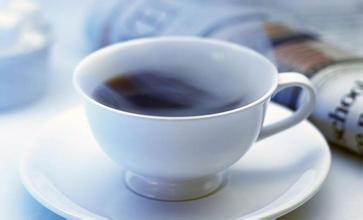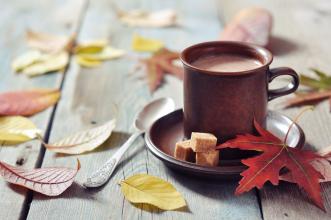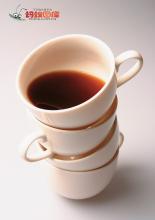Description of Flavor of Fine Coffee beans in Dominica Santo Domingo Coffee Variety producing area
Pedro Santana inherited a government on the brink of collapse. He began negotiations with Queen Isabella II of Spain and the Governor of Cuba to make Dominica a dependent state of Spain. In March 1861, Santana officially restored the Dominican Republic to Spain. But the voices of opponents continued, and in 1863 the Patriotic War was waged, led by General Roriquez, Moncio and Gregorio Ruperon. The Haitian regime in the west at that time was worried that Spain would threaten Haiti when it returned to Dominica, so it actively supported the rebels. The United States, which is in a state of civil war, also strongly protested Spain's return to Dominica for colonial policy. Less than three years after the Rebellion War, Spanish troops were completely withdrawn from the island in 1865. In order to prevent European interference with American affairs and to protect the Panama Canal under construction, President Roosevelt opposed the continued European colonization of Latin America on the basis of Monroe Doctrine, and put forward his own Roosevelt corollary in 1904, confirming that the United States had the right to intervene in Latin American affairs. The United States and Dominica agreed in 1905 that the United States would manage Dominica's customs foreign affairs, and the following year it signed a contract with a number of countries to maintain this obligation for 50 years. It is agreed that the United States has an obligation to use part of its customs revenue to repay Dominica's growing foreign debt.
The earliest coffee in Dominica was introduced from Martinique (the overseas province of France), dating back to the early 18th century. Dominica is an island country with a tropical climate, with little change in temperature throughout the year. Except for the lower temperature in the Central Cordillera Mountains, which can reach less than 0 ℃ in winter, the average annual temperature in other areas is between 25 and 30 ℃, while affected by the mountain topography, the north and east face the northeast trade wind with an annual precipitation of 1500-2500 mm, which belongs to tropical maritime climate. The mountain forest is dense, the leeward southwest annual precipitation is 500-1000 mm, the dry season is long, belongs to the savanna climate.
The temperate climate in Dominica is conducive to coffee cultivation, and the best places to grow coffee are the Barahona region in the southwest and the Cibao Valley north of Santiago, Dominica's second largest city. The northern region, represented by Hibao, and the southern region, including Okayabani Santo Domingo, produce good coffee. Among them, the coffee produced by Santo Domingo and Barney is world-famous and is almost synonymous with domiga coffee.
Dominica-White Beach and Black Coffee
Coffee in Dominica varies slightly in taste according to the altitude of the region where it is grown, with sour but rich taste in the highlands, and less sour and smoother taste in the lowlands. The high-quality coffee beans produced by some Dominican estates have a rich aroma, mellow taste and moderately bright sour taste, and are often compared with those from Puerto Rico or Jamaica.
Dominica-White Beach and Black Coffee
Turning to the introduction of Dominican coffee, the most distinctive features are fresh and elegant, full of particles, excellent acidity and pleasant flavor (two colleagues agree with this). Such flavor characteristics are not only related to varieties and soil quality, but also closely related to the picking and handling of raw beans. Coffee in Dominica is selected by the manual method with the highest cost, and workers mainly consider the fullness of coffee granules and the uniformity of coffee granules. According to these conditions, the coffee beans with the fullest and most uniform grains can represent the best quality in Dominica. The finest coffee. And only use the washing treatment method to ensure the high quality and stability of the coffee beans. the coffee beans treated with water washing have a cleaner taste and emit a touch of pure and soft aroma, which can make people feel a faint fruity aroma and a winding aftertaste. Smooth and smooth

Important Notice :
前街咖啡 FrontStreet Coffee has moved to new addredd:
FrontStreet Coffee Address: 315,Donghua East Road,GuangZhou
Tel:020 38364473
- Prev

Introduction to the flavor and taste of coffee varieties in Kilimanjaro, Tanzania
Tanzania's main coffee producing area, located at the foot of Mount Kilimanjaro, is rich in volcanic soil. Some coffee trees planted here are more than 100 years old. Coffee was first introduced by Christians from Kenya to grow coffee. Coffee trees must be carefully taken care of, weeded and fertilized. And old branches must be cut off so that new branches can grow to maintain the quality of coffee beans.
- Next

Bali coffee varieties producing area flavor taste boutique coffee beans characteristics introduction
Bali is Indonesia's more than 13600 islands in the most dazzling island, located 8 degrees south of the Indian Ocean equator, east of Java, the island is 140 kilometers wide from east to west, 80 kilometers from north to south, the total area of the island is 5620. Bali is an Indonesian island located at the western end of the Lesser Sunda Islands, roughly rhombic in shape, with an east-west axis. Area approximately 5620
Related
- Detailed explanation of Jadeite planting Land in Panamanian Jadeite Manor introduction to the grading system of Jadeite competitive bidding, Red bid, Green bid and Rose Summer
- Story of Coffee planting in Brenka region of Costa Rica Stonehenge Manor anaerobic heavy honey treatment of flavor mouth
- What's on the barrel of Blue Mountain Coffee beans?
- Can American coffee also pull flowers? How to use hot American style to pull out a good-looking pattern?
- Can you make a cold extract with coffee beans? What is the right proportion for cold-extracted coffee formula?
- Indonesian PWN Gold Mandrine Coffee Origin Features Flavor How to Chong? Mandolin coffee is American.
- A brief introduction to the flavor characteristics of Brazilian yellow bourbon coffee beans
- What is the effect of different water quality on the flavor of cold-extracted coffee? What kind of water is best for brewing coffee?
- Why do you think of Rose Summer whenever you mention Panamanian coffee?
- Introduction to the characteristics of authentic blue mountain coffee bean producing areas? What is the CIB Coffee Authority in Jamaica?

